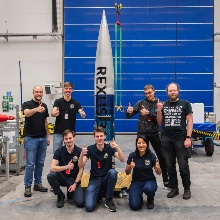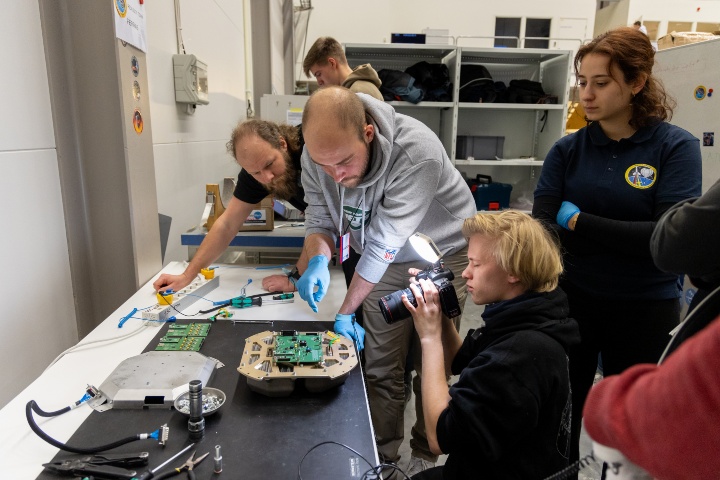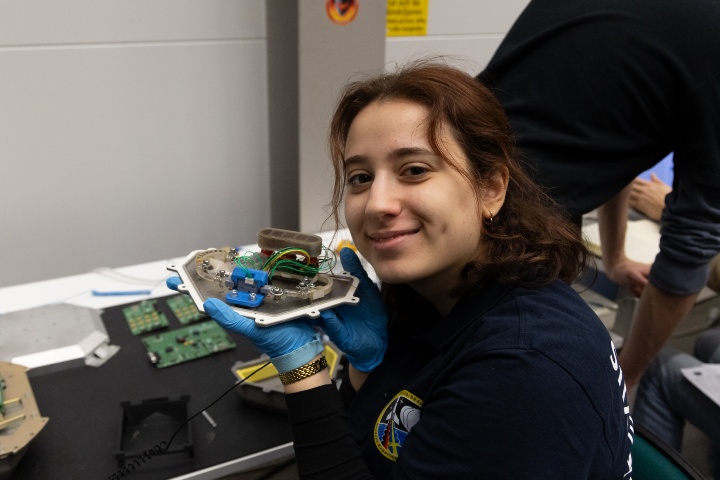Everything went smoothly until the end of the mission - which proved a hard test for the students' nerves. The REXUS 31 flight ended with a non-nominal trajectory. This means that the rocket made a hard landing, but the experimental module developed by the Small Satellite Student Society (KSat e.V.), survived the landing unscathed.
"We have been researching ferrofluids for several years in order to demonstrate the resilience and reliability of this technology," says Manfred Ehresmann, FerrAS project supervisor and employee at the Institute of Space Systems at the University of Stuttgart. "The fact that it survived a free fall from a height of almost 80 kilometers exceeded our expectations."
Data help to verify ferrofluid technology in space
The FerrAS experiment consists of two parts: A linear pump and a displacement pump, both of which work by using magnetic fields, permanent magnets and ferrofluid, a magnetic liquid.
During the course of the mission, both systems provided reliable data on their pumping behavior, such as flow rates, power consumption, temperature development and pressure. The strong launch acceleration and the absence of gravity had a clear influence on the behavior of the systems during the rocket's parabolic flight. Clear evidence that the experiment was a success. With this data, the students can now evaluate the pump systems in terms of their performance, efficiency and application limits.
"We are thrilled and proud that our experiment was successful," says Michael Steinert, FerrAS student project manager. "Our efforts have paid off, and we have substantially enhanced the technology readiness level (TRL) of ferrofluid pumps for space travel." The analysis remains intriguing as we are also observing previously unexplained behavior in the data.
Follow-up project already in sight
The students successfully simulated the entire mission trajectory for the displacement pump in the original setup, thus gathering additional reference data under Earth's gravity conditions. This is not possible for the linear pump, as it was partially damaged during the landingThe reference data offer insights into observed behaviors that may not be solely attributed to the zero-gravity environment.
In addition to evaluating the data, KSat e.V. is already developing a follow-up project. With FINIX, the next flight on a REXUS rocket is scheduled for one year from now. The students want to test an improved version of the displacement pump and a new electrical switch.

Jacqueline Gehrke
Online Editor

Manfred Ehresmann
M.Sc.Systemsengineer and Research Assistant




